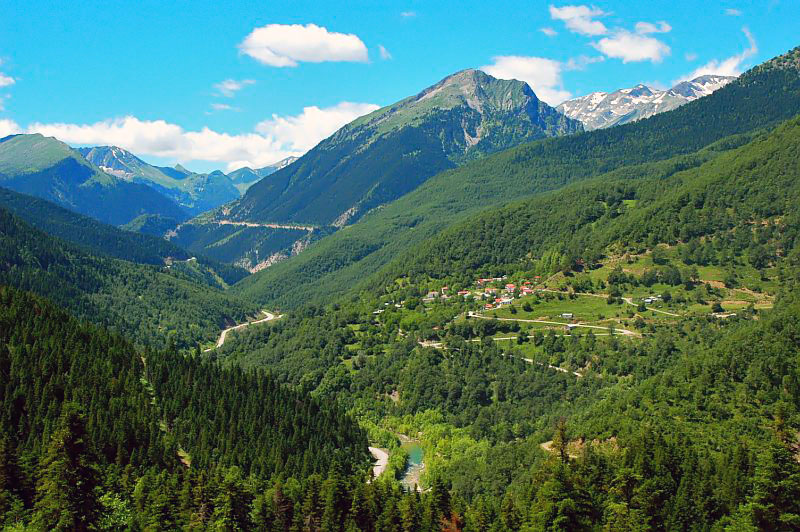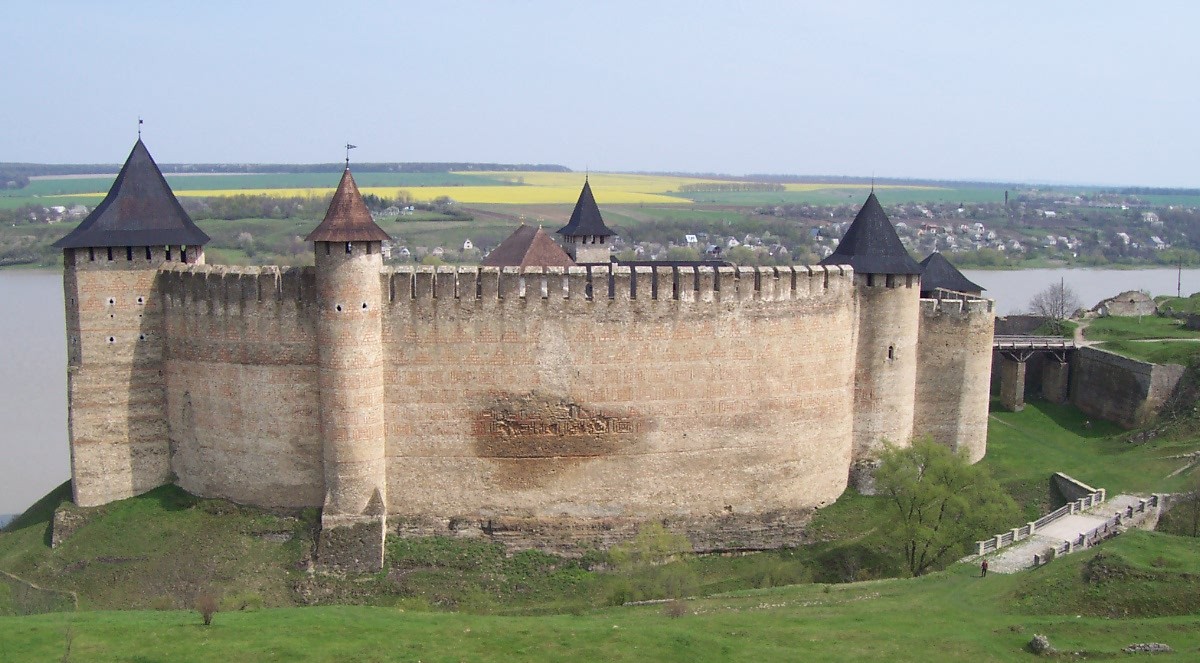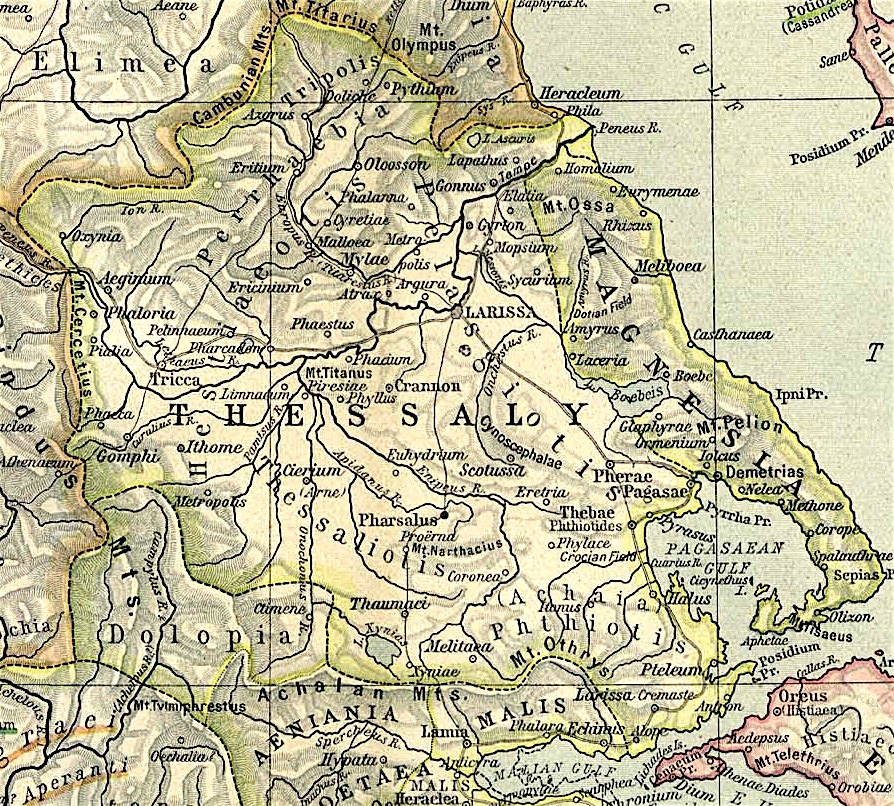|
Trikala Castle
The Trikala Castle ( el, Κάστρο Τρικάλων) is the Byzantine-era citadel of the city of Trikala in western Thessaly, Greece. History The castle lies on a hill at the northeastern side of the city, and was first built, according to Procopius of Caesarea, by Emperor Justinian I (r. 527–565) on the ruins of the acropolis of the ancient city of Trikke. In its current form it largely dates from the Palaiologan period, where it was extensively rebuilt and remodelled. The citadel suffered much damage during its conquest by the Ottoman Turks in 1393/4, but the city's importance as a bulwark against the restless inhabitants of the Pindus mountains and the Agrafa region, as well as being the centre of the Ottoman administration in Thessaly, meant that it was quickly repaired and strengthened. The castle suffered damage and was repaired after the failed rebellions of 1854 and 1878 against Ottoman rule. Description The castle is, according to the archaeologist Krystallo ... [...More Info...] [...Related Items...] OR: [Wikipedia] [Google] [Baidu] |
Trikala
Trikala ( el, Τρίκαλα; rup, Trikolj) is a city in northwestern Thessaly, Greece, and the capital of the Trikala regional unit. The city straddles the Lithaios river, which is a tributary of Pineios. According to the Greek National Statistical Service, Trikala is populated by 81,355 inhabitants (2011), while in total the Trikala regional unit is populated by 131,085 inhabitants (2011). Trikala is a lively Greek city with picturesque monuments and old neighborhoods with traditional architecture. The city is near Meteora and also near the mountain range of south Pindus, where there are many destinations (i.e. Pyli's stone bridge, Elati, Pertouli, Palaiokarya's stone bridge and waterfall, Pertouli Ski Center etc.). History Antiquity The region of Trikala has been inhabited since prehistoric times. The first indications of permanent settlement have been uncovered in the cave of Theopetra, and date back to approx. 49,000 BC. Neolithic settlements dating back to 6,000 BC ... [...More Info...] [...Related Items...] OR: [Wikipedia] [Google] [Baidu] |
Pindus
The Pindus (also Pindos or Pindhos; el, Πίνδος, Píndos; sq, Pindet; rup, Pindu) is a mountain range located in Northern Greece and Southern Albania. It is roughly 160 km (100 miles) long, with a maximum elevation of 2,637 metres (8652') ( Mount Smolikas). Because it runs along the border of Thessaly and Epirus, the Pindus range is known colloquially as the ''spine of Greece''. The mountain range stretches from near the Greek-Albanian border in southern Albania, entering the Epirus and Macedonia regions in northern Greece down to the north of the Peloponnese. Geologically it is an extension of the Dinaric Alps, which dominate the western region of the Balkan Peninsula. History of the name Historically, the name Pindos refers to the mountainous territory that separates the greater Epirus region from the regions of Macedonia and Thessaly. According to John Tzetzes (a 12th-century Byzantine writer), the Pindos range was then called Metzovon. When translat ... [...More Info...] [...Related Items...] OR: [Wikipedia] [Google] [Baidu] |
Byzantine Castles In Thessaly
The Byzantine Empire, also referred to as the Eastern Roman Empire or Byzantium, was the continuation of the Roman Empire primarily in its eastern provinces during Late Antiquity and the Middle Ages, when its capital city was Constantinople. It survived the fragmentation and fall of the Western Roman Empire in the 5th century AD and continued to exist for an additional thousand years until the fall of Constantinople to the Ottoman Empire in 1453. During most of its existence, the empire remained the most powerful economic, cultural, and military force in Europe. The terms "Byzantine Empire" and "Eastern Roman Empire" were coined after the end of the realm; its citizens continued to refer to their empire as the Roman Empire, and to themselves as Romans—a term which Greeks continued to use for themselves into Ottoman times. Although the Roman state continued and its traditions were maintained, modern historians prefer to differentiate the Byzantine Empire from Ancient Rome a ... [...More Info...] [...Related Items...] OR: [Wikipedia] [Google] [Baidu] |
Buildings And Structures In Trikala
A building, or edifice, is an enclosed structure with a roof and walls standing more or less permanently in one place, such as a house or factory (although there's also portable buildings). Buildings come in a variety of sizes, shapes, and functions, and have been adapted throughout history for a wide number of factors, from building materials available, to weather conditions, land prices, ground conditions, specific uses, monument, prestige, and aesthetic reasons. To better understand the term ''building'' compare the list of nonbuilding structures. Buildings serve several societal needs – primarily as shelter from weather, security, living space, privacy, to store belongings, and to comfortably live and work. A building as a shelter represents a physical division of the :Human habitats, human habitat (a place of comfort and safety) and the ''outside'' (a place that at times may be harsh and harmful). Ever since the first cave paintings, buildings have also become objects or ... [...More Info...] [...Related Items...] OR: [Wikipedia] [Google] [Baidu] |
World War II
World War II or the Second World War, often abbreviated as WWII or WW2, was a world war that lasted from 1939 to 1945. It involved the World War II by country, vast majority of the world's countries—including all of the great powers—forming two opposing military alliances: the Allies of World War II, Allies and the Axis powers. World War II was a total war that directly involved more than 100 million Military personnel, personnel from more than 30 countries. The major participants in the war threw their entire economic, industrial, and scientific capabilities behind the war effort, blurring the distinction between civilian and military resources. Air warfare of World War II, Aircraft played a major role in the conflict, enabling the strategic bombing of population centres and deploying the Atomic bombings of Hiroshima and Nagasaki, only two nuclear weapons ever used in war. World War II was by far the List of wars by death toll, deadliest conflict in hu ... [...More Info...] [...Related Items...] OR: [Wikipedia] [Google] [Baidu] |
Enceinte
Enceinte (from Latin incinctus: girdled, surrounded) is a French term that refers to the "main defensive enclosure of a fortification". For a castle, this is the main defensive line of wall towers and curtain walls enclosing the position. For a settlement, it would refer to the main town wall with its associated gatehouses, towers, and walls. According to the 1911 ''Encyclopædia Britannica'', the term was strictly applied to the continuous line of bastions and curtain walls forming "the body of the place", this last expression being often used as synonymous with ''enceinte''. However, the outworks or defensive wall close to the enceinte were not considered as forming part of it. In early 20th-century fortification, the enceinte was usually simply the ''innermost'' continuous line of fortifications. In architecture, generally, an enceinte is the close or precinct of a cathedral, abbey, castle, etc. This definition of the term differs from the more common use of enceinte ... [...More Info...] [...Related Items...] OR: [Wikipedia] [Google] [Baidu] |
Sanjak Of Trikala
The Sanjak of Tirhala or Trikala (Ottoman Turkish: ; el, λιβάς/σαντζάκι Τρικάλων) was second-level Ottoman province ( or ) encompassing the region of Thessaly. Its name derives from the Turkish version of the name of the town of Trikala. It was established after the conquest of Thessaly by the Ottomans led by Turahan Bey, a process which began at the end of the 14th century and ended in the mid-15th century. History In the mid-14th century, Thessaly had been ruled by Serbian and Greek lords and enjoyed great prosperity. It was conquered by the Ottoman Turks in successive waves, in 1386/7, the mid-1390s, and again after 1414/23, and the conquest was not completed until 1470. Trikala itself fell probably in 1395/6 (although Evliya Çelebi claims it happened as early as 1390). The newly conquered region was initially the patrimonial domain of the powerful marcher-lord () Turahan Bey (died 1456) and of his son Ömer Bey (died 1484) rather than a regular provin ... [...More Info...] [...Related Items...] OR: [Wikipedia] [Google] [Baidu] |
Agrafa
Agrafa ( el, Άγραφα, ) is a mountainous region in Evrytania and Karditsa regional units in mainland Greece, consisting mainly of small villages. It is the southernmost part of the Pindus range. There is also a municipality with the same name, the Municipality of Agrafa, but it covers only a small percentage of the area. History The Agrafa region is famous for its complete autonomy throughout the entire years of Ottoman occupation of central Greece. The word ''ágrafa'' literally translates to unwritten, which means ''unregistered'' or uncharted; because the Ottomans were unable to conquer this region, the area and its population were not recorded in the Sultan's tax register. As a result the people were usually free to conduct their business and customs as they pleased without Ottoman influence. The fiercely independent spirit of its people, known as ''Agrafiotes,'' is matched by a harsh and forbidding landscape. The central Agrafiotis River valley is surrounded o ... [...More Info...] [...Related Items...] OR: [Wikipedia] [Google] [Baidu] |
Palaiologan Period
The Byzantine Empire was ruled by the Palaiologos dynasty in the period between 1261 and 1453, from the restoration of Byzantine rule to Constantinople by the usurper Michael VIII Palaiologos following its recapture from the Latin Empire, founded after the Fourth Crusade (1204), up to the Fall of Constantinople to the Ottoman Empire. Together with the preceding Nicaean Empire and the contemporary '' Frankokratia'', this period is known as the late Byzantine Empire. From the start, the regime faced numerous problems.Mango, p. 255 The Turks of Asia Minor had begun conducting raids and expanding into Byzantine territory in Asia Minor by 1263, just two years after the enthronment of the first Palaiologos emperor Michael VIII. Anatolia, which had formed the very heart of the shrinking empire, was systematically lost to numerous Turkic '' ghazis'', whose raids evolved into conquering expeditions inspired by Islamic zeal, the prospect of economic gain, and the desire to seek refuge ... [...More Info...] [...Related Items...] OR: [Wikipedia] [Google] [Baidu] |
Thessaly
Thessaly ( el, Θεσσαλία, translit=Thessalía, ; ancient Thessalian: , ) is a traditional geographic and modern administrative region of Greece, comprising most of the ancient region of the same name. Before the Greek Dark Ages, Thessaly was known as Aeolia (, ), and appears thus in Homer's '' Odyssey''. Thessaly became part of the modern Greek state in 1881, after four and a half centuries of Ottoman rule. Since 1987 it has formed one of the country's 13 regions and is further (since the Kallikratis reform of 2011) sub-divided into five regional units and 25 municipalities. The capital of the region is Larissa. Thessaly lies in northern Greece and borders the regions of Macedonia on the north, Epirus on the west, Central Greece on the south, and the Aegean Sea on the east. The Thessaly region also includes the Sporades islands. Name and etymology Thessaly is named after the ''Thessaloi'', an ancient Greek tribe. The meaning of the name of this tribe is ... [...More Info...] [...Related Items...] OR: [Wikipedia] [Google] [Baidu] |
Acropolis
An acropolis was the settlement of an upper part of an ancient Greek city, especially a citadel, and frequently a hill with precipitous sides, mainly chosen for purposes of defense. The term is typically used to refer to the Acropolis of Athens, yet every Greek city had an acropolis of its own. Acropoloi were used as religious centers and places of worship, forts, and places in which the royal and high-status resided. Acropolises became the nuclei of large cities of classical ancient times, and served as important centers of a community. Some well-known acropoloi have become the centers of tourism in present-day, and, especially, the Acropolis of Athens has been a revolutionary center for the studies of ancient Greece since the Mycenaean period. Many of them have become a source of revenue for Greece, and represent some great technology during the period. Origin An acropolis is defined by the Greek definition of ἀκρόπολις, akropolis; from akros (άκρος) or (άκ ... [...More Info...] [...Related Items...] OR: [Wikipedia] [Google] [Baidu] |
Justinian I
Justinian I (; la, Iustinianus, ; grc-gre, Ἰουστινιανός ; 48214 November 565), also known as Justinian the Great, was the Byzantine emperor from 527 to 565. His reign is marked by the ambitious but only partly realized ''renovatio imperii'', or "restoration of the Empire". This ambition was expressed by the partial recovery of the territories of the defunct Western Roman Empire. His general, Belisarius, swiftly conquered the Vandal Kingdom in North Africa. Subsequently, Belisarius, Narses, and other generals conquered the Ostrogothic kingdom, restoring Dalmatia, Sicily, Italian peninsula, Italy, and Rome to the empire after more than half a century of rule by the Ostrogoths. The Liberius (praetorian prefect), praetorian prefect Liberius reclaimed the south of the Iberian peninsula, establishing the province of Spania. These campaigns re-established Roman control over the western Mediterranean, increasing the Empire's annual revenue by over a million Solidus (coin) ... [...More Info...] [...Related Items...] OR: [Wikipedia] [Google] [Baidu] |









